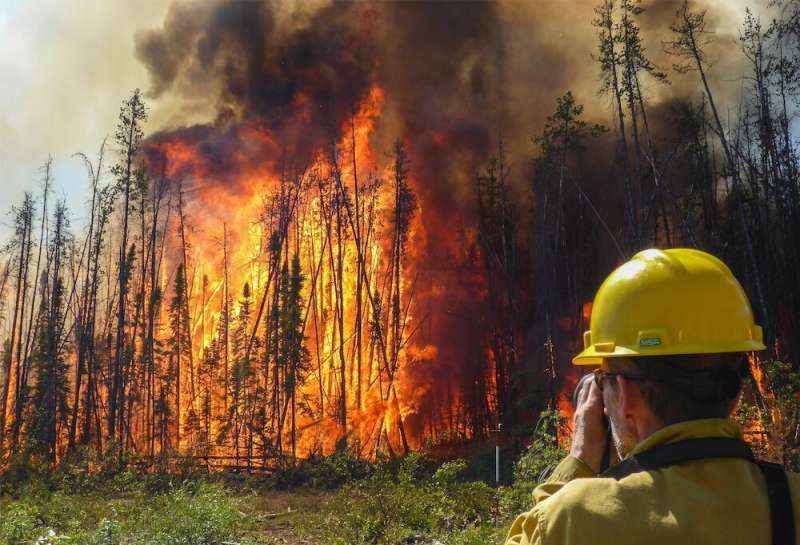
The new study showed a significant increase in emissions from boreal fires over the past two decades. Things were particularly dramatic in 2021, when they comprised a record 23% of global vegetation wildfire emissions, more than twice their contribution in a more typical year.
If this trend continues, the boreal forest may very soon become the dominant source of global emissions from biomass burning, overtaking the notorious tropical peatland fires (such as those in Indonesia in 2015) in terms of global significance and adding further to the “fire–carbon-climate warming” feedback.
The 2021 fire season was made particularly extreme by simultaneously hot and dry conditions both in North America and northern Europe and Asia. If such weather patterns do become more frequent, leading to more fires in the boreal region, these forests may reach a “wildfire tipping point.” A study examining the extreme fires of 2014 in boreal north-west Canada demonstrated that some areas were already turning from carbon sinks into net emitters. This new study covering the entire boreal biome suggests this ecosystem as a whole—from Siberia to Canada—is rapidly approaching this tipping point.